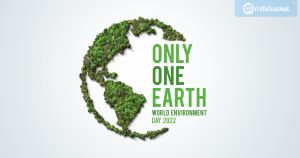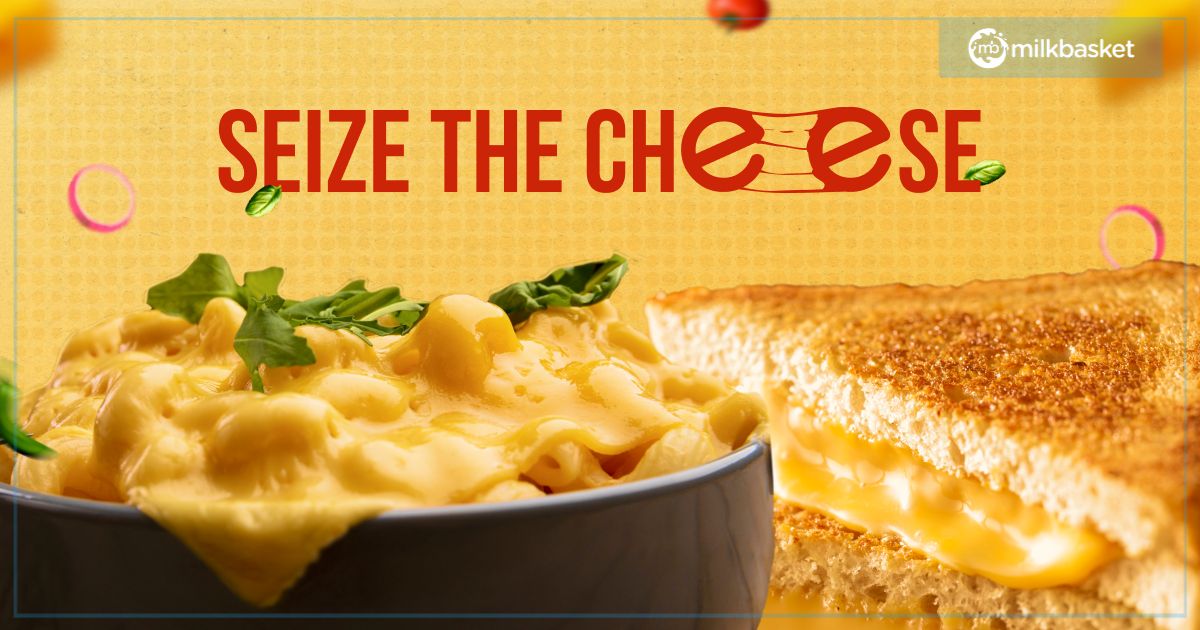Seize The Cheese
The exact origin of cheese is difficult to determine, but it is estimated to have emerged between 8,000 & 10,000 years ago, coinciding with the domestication of milk-producing animals. There are references to cheesemaking in Greek mythology & ancient Egyptian murals dating back to 4,000 years.
The discovery of cheese is believed to have occurred by chance when milk was stored in the stomach of animals. The stored milk interacted with rennet, an enzyme found in the stomach of ruminant animals, resulting in the formation of cheese.
Archaeological evidence in Kuyavia, Poland, includes strainers containing milk-fat molecules dating back to 5,000 BC, indicating early cheesemaking practices. In ancient Egypt, murals depicting cheese production have been found & can be traced back to 2,000 BC.
The widespread popularity of cheese can be attributed, in part, to the influence of imperialism, as it was introduced & embraced in various regions around the world.
The best way to have cheese is, however you like! A cheese lover’s delight is having an array of cheese & cheese spreads to choose from! You can get this from Milkbasket & enjoy it for your breakfast, lunch or dinner! Cheese can be paired with tea, coffee, fruit, cake, sandwiches & so much more!
Facts About Rare Cheese
Casu Marzu: This unique cheese from Sardinia, Italy, is known for its uncommon production method. It is left to ferment with live maggots, which break down the cheese’s fat, resulting in a soft & creamy texture.
Mimolette: This French cheese has a distinct orange color & is aged with cheese mites. The mites consume the rind, creating a unique flavour profile.
Cacio e Pepe Cheese: Originating from Italy, this cheese is made by infusing pecorino cheese with black pepper. The cheese develops a spicy & aromatic flavour, perfect for pasta dishes.
Stinking Bishop: This English cheese gets its name from the type of pear used to make perry, a fermented pear cider. The cheese is washed in the perry, resulting in a pungent aroma.
Pule Cheese: Hailing from Serbia, this rare cheese is made exclusively from the milk of Balkan donkeys. It is known for its high price tag & delicate flavour.
Vacherin Mont d’Or: This seasonal cheese is made in Switzerland & France during the winter months. It has a creamy, spoonable texture & is typically enjoyed by scooping it out of its wooden box.
Bleu de Gex: Produced in the Jura Mountains of France, this blue cheese is aged in caves & has a mild, tangy flavour. It is made with milk from Montbéliarde cows.
Beaufort d’Alpage: Considered one of the finest French Alpine cheeses, Beaufort d’Alpage is made exclusively from the milk of cows grazing on mountain pastures. It has a rich, nutty flavour.
Kaffeost: Originating from Finland, Kaffeost is a cheese that is specifically meant to be eaten with coffee. It is made by curdling milk with rennet & is often flavoured with spices like cinnamon or cardamom.
Rogue River Blue: This American blue cheese is unique in that it is wrapped in grape leaves soaked in pear brandy during the aging process. It has a complex flavour profile with fruity & nutty undertones.
Facts About Cheese
- There are over 1,400 different varieties of cheeses worldwide, each with its own unique flavour, texture & production method.
- The world’s largest producer of cheese is the United States, followed by Germany & France.
- Cheese is a rich source of calcium, protein, various vitamins & minerals, making it a nutritious food choice.
- The term “cheese” is derived from the Latin word “caseus.”
- Switzerland has the highest per capita consumption of cheese in the world.
- The world’s most expensive cheese is called “Pule” & is made from donkey milk. It can cost up to $600 per pound.
- Some cheeses, such as roquefort & gorgonzola, have been aged in caves for centuries to develop their unique flavors.
- The largest wheel of cheese ever made weighed over 57,000 pounds! It was produced in Wisconsin, USA.
- The process of making cheese is called cheesemaking or cheese production.
- Cheese is a popular ingredient in many dishes, including pizza, pasta, sandwiches & salads.
- The oldest known cheese in the world was found in a tomb in China & is estimated to be over 3,600 years old!
- The term “cheesehead” is a colloquial name for someone from Wisconsin, USA, due to the state’s long history of cheese production.
- Cheese is made from the milk of various animals, including, not limited to cows, goats, sheep & buffalo.
- The famous Swiss cheese with holes, such as emmental & gruyere, is caused by carbon dioxide gas released during fermentation.
- Cheese can be aged for different lengths of time, ranging from a few weeks to several years, which affects its flavor & texture.
- The world’s most popular cheese is Cheddar, followed closely by Mozzarella.
- Cheese can be enjoyed at different temperatures, with some varieties best served at room temperature, while others are enjoyed melted or chilled.
- The blue veins in blue cheese, such as roquefort & stilton, are caused by the growth of mould cultures, specifically Penicillium.
- Some cheeses, like camembert & brie, have soft, bloomy rinds that develop a white, edible mould coating during aging.
- The average American consumes about 36 pounds of cheese per year.
- The process of aging cheese is called “affinage.”
- The first cheese factory in the world was established in Switzerland in 1815.
- The largest cheese board ever created weighed over 4,400 pounds & featured over 100 different varieties of cheese.
- Cheese can be made using both pasteurized & unpasteurized milk, with each method resulting in different flavours & textures.
- The term “cheese tasting” is called “fromage tasting” in French.
- The “Cheese Rolling” event held annually in Gloucestershire, England, involves rolling a wheel of cheese down a hill & participants chase after it.
- Some cheeses, like halloumi & paneer, have a high melting point, allowing them to be grilled or fried without losing their shape.
- The town of Gouda in the Netherlands is famous for its traditional Gouda cheese.
- The art of pairing cheese with wine is known as “cheese & wine pairing,” & certain combinations can enhance the flavours of both.
Categories
Popular Posts
-

Milkbasket’s Latest DVC Campaign Is Out, And It’s Quirky And Relatable As Heck!
Spread the loveThe year 2021 was all about patience, resilience, and the grind it takes to get back up from a worldwide slump that the COVID-19 pandemic had hit us with. It made us all revisit our roots, recalibrate our priorities, and strengthen our foundations. With the better part of 2022 gone into slowly spreading […]
28 Sep 2022 read More... -

Milkbasket – A Revolution In The Online Grocery Delivery Services In India
Spread the loveThere’s no denying the fact that the pandemic has drastically changed the way people spend their time online, buying everything through various online retail platforms with the convenience of home deliveries in India. Milkbasket, with it’s features has proven to be a revolution in the online grocery delivery services in India. While stepping […]
08 Jul 2022 read More... -

Nabhi Chikitsa or Belly Button Therapy: The Simple Health Secret You NEED To Know!
Spread the loveOur Navel or Belly Button (scientific name Umbilicus) is believed to be the centre of our life force. Most of us take it as just another part of our body not knowing its deep, thrilling world. In ancient Hindu healing practices, the Navel is considered to be the most important point of the […]
08 Sep 2022 read More... -

Recycling At Milkbasket: A World Environment Day Special
Spread the loveAs people who serve and bring convenience to other people, it’s important for us as brands to give a thought from time to time to what matters the most to us as human beings. The realization of the countless resources that our planet has provided us allows us to be amazed and humbled […]
05 Jun 2022 read More...

